AKA: Railway Asylum
Director: Ding Sheng
Cast: Jackie Chan, Xu Fan, Edison Huang, Nick Wang, Darren Wang, Yano Koji, Sang Ping, Wu Yonglun, Zhang Yishang, Jaycee Chan, Ikeuchi Hiroyuki, Asano Nagahide
Running Time: 123 min.
By Paul Bramhall
The pairing of director Ding Sheng and ageing action superstar Jackie Chan has been one of the more intriguing partnerships of recent years. In 2009, Little Big Soldier was released, and provided a welcome breath of fresh air in contrast to Chan’s Hollywood productions made during the same period, such as The Spy Next Door. Sheng seemed to be a director who knew not only how to play to Chan’s strengths, but also to his age, crafting what many still believe to be one of Chan’s best movies of the last 10 years. The director and star would reunite again in 2013 for Police Story 2013, an in-name only sequel to Chan’s mega popular Police Story series. While the production itself had no relation to the previous Police Story movies, its ambitious story set in a single location was also a welcome departure from what audiences had come to expect from Chan, even if it didn’t quite match those ambitions.
With Railroad Tigers, after a 3 year gap, Sheng and Chan reunite once more. While Sheng has directed a movie between their collaborations, with the exceptional crime thriller Saving Mr Wu, Chan’s own limitless work ethic has seen him headlining the likes of the historical actioner Dragon Blade, and buddy comedy Skiptrace. Both movies were met with disappointment from fans and critics alike, so his re-teaming with Sheng is a timely one. The plot revolves around a group of railroad thieves led by Chan, who become involved in helping Chinese freedom fighters blow up a crucial railway bridge controlled by the Japanese, led by Hiroyuki Ikeuchi from Ip Man. It’s a significant departure from the type of roles we’ve become accustomed to seeing Chan in, and arguably the setting of Japan occupied China owes more to such recent Korean movies like The Good, The Bad, The Weird and Assassination, than any of either the director or stars previous efforts.
Railroad Tigers admittedly gets off to a jarring start. Opening in a modern day railway museum, an Australian teacher guides a group of schoolchildren around the various trains on display, excitedly prompting them to shout out what colours the trains are. If you didn’t know any better, you’d swear the wrong movie must be playing. The camera then pans to an Asian child (at this point I had no idea where this train museum is supposed to be – Australia? China?) who wanders off by himself, sneaking into the carriage of one of the old steam trains on display. It’s while he’s in the carriage that the furnace doors mysteriously open by themselves, revealing a faintly flickering ember within the chamber. Cue camera zooming in to the flickering ember as the child stares wide eyed, and boom, the animated opening credits sequence starts. I confess at this point I felt my heart sink, as I don’t think I was ready for another Chan kiddie-friendly action flick, regardless of if it’s from Hollywood or China (or Australia for that matter).
Thankfully the contemporary setting is never returned to again, until, as expected, the final scene, which also throws in a big name cameo as the child’s father. I always find these historical productions which feel the need to be bookmarked by contemporary scenarios to be completely out of place. From Michelle Yeoh’s Olympic speech in the Director’s Cut of Fearless, to the festive celebrations that start and end The Taking of Tiger Mountain. They just don’t work, and here is no different. With that said, onto the movie itself, well, the real movie. Opening with Chan and his crew, which includes his son Jaycee Chan and former K-pop group member Edison Huang, pulling off one of their rob the rich and give to the poor train heists, the various creative ways that the team come up with to board the trains are some of the movies highlights. The Emperor of the North Pole would be proud.
Sheng takes a while to find his footing though, most likely due to it being the first time he’s worked on such a big scale production. The movie has an annoying habit of constantly freeze framing the screen to an animated still whenever a new character appears on-screen, providing text stating their name and what their job is. Bizarrely, for Chan and his gang of thieves, the text also provides each characters catchphrase as well. Chan’s catchphrase is ‘Shut up’. The problem is, over 30 minutes in and new characters are still appearing. While I confess to not actually keeping count, I could swear there must be around 20 characters introduced, some of whom never even appear again other than the scene they get introduced in. I assume there are likely many scenes from Railroad Tigers that have been left (wisely) on the cutting room floor, however even if this is true, there can be no denying that the first third begins to feel like a bit of a slog.
Things are further hindered by the inclusion of chapter titles. The first segment is called Rob the Train, the second segment is called Rescue the Injured Soldier, and so on. The problem with these titles though is that the only meaning they have, is to essentially act as a kind of spoiler as to what’s going to happen within the next 15 or so minutes, so it would have been much better to do away with them all together. Thankfully, around the 40 minute mark, everything seems to click into place. An entertaining scene, that sees the father and son duo of Jackie and Jaycee attempt to steal a number of explosives stored in a warehouse, signals both Chan and Sheng finding their pace and rhythm, and for the remainder of the movie it becomes a smooth and thoroughly enjoyable ride.
It can’t be argued that Chan is the main character in Railroad Tigers, and while I haven’t seen all of his most recent productions, this marks the first time for me to see him in such a genre picture during which he doesn’t fight at all. Yes there’s a punch thrown on the odd occasion, a brief skirmish here and there, but the Chan signature style of fight choreography is completely absent, and as a movie it works all the better for it. There have been too many times during Chan’s career when he’s attempted to do something different, but still had one of his fight scenes shoehorned in, dating all the way back to 1993’s Crime Story. Instead, here he gets by on pure determination and teamwork with the other members in the group, and as a result the movie is a lot better for it, never needing to fall under the shadow of those conversations which revolves around Chan’s action performance.
There is of course, plenty of action to be hand in Railroad Tigers, some of it surprisingly violent. I’d say this movie likely has the highest kill-count of any Chan picture, despite successfully managing to maintain a relatively light tone throughout. More than a handful of Japanese soldiers have their necks snapped, with dozens more being shot or machine gunned down. A worthy comparison for the final 30 minutes would almost be to call it The Dirty Dozen on a Train. Sadly, blatant CGI sometimes does rear its ugly head, although nowhere near as much as expected in a movie such as this.
As the end credits show, many shots were done using miniatures, and the train that becomes the focus of the story is thankfully very real. However it still makes me question how the filmmakers can’t recognize bad CGI. In one shot, a motorbike with a sidecar launches off a cliff in an attempt to mount the train, and it looks completely unconvincing. However in the next shot, a real motorbike and sidecar go hurtling over a ditch, resulting in an impressive stunt which sends the rider flying through the air. Why these two shots were placed next to each other will never make sense to me, as the latter just further highlights the lack of realism of the first.
After the rather droll opening third, Chan’s trademark sense of comedic timing also works its way into proceedings, delivering some welcome laugh out loud moments. Many feel that Chan puts much more effort into his Chinese movies that he does those he makes in Hollywood, and Railroad Tigers would be a good example to prove that theory correct. While in movies like Skiptrace we still see the yawn inducing ‘punch something hard, shake hands in pain’ comedy style that was funny 20 years ago, here there’s an originality to the physical comedy on display, and it serves as a reminder as to why he’s a legend in the first place. Not every director is as good as Sheng at drawing out the best from Chan, so I hope Railroad Tigers will be indicative of the quality of production both continue to work on while they’re not working together. It may have gotten off to a bumpy start, but Railroad Tigers definitely ends on track, and that makes it a commendable effort.
Paul Bramhall’s Rating: 7/10

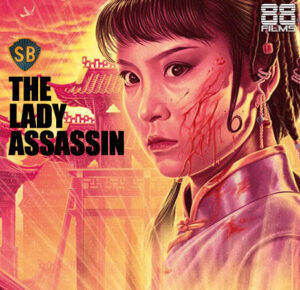
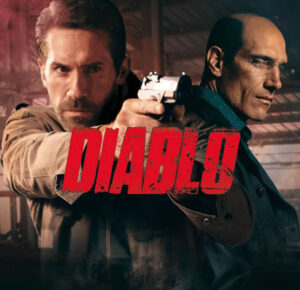

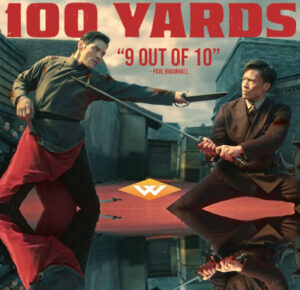
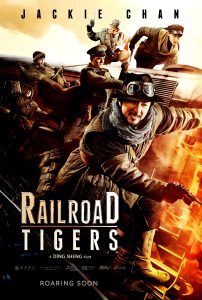
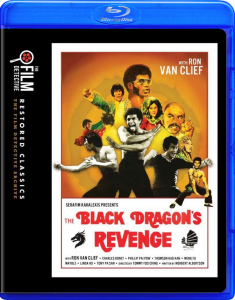
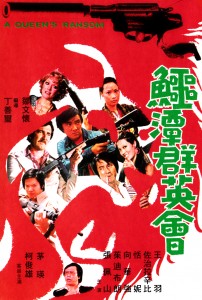



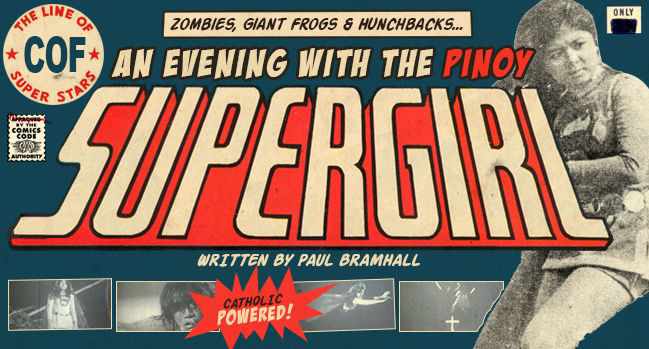


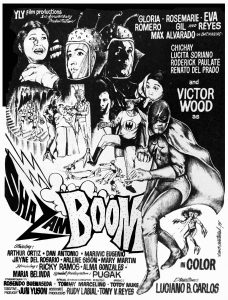
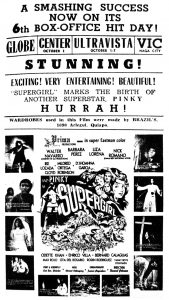











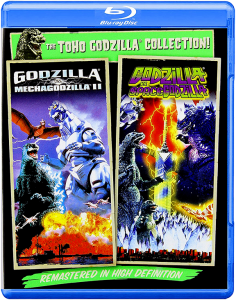

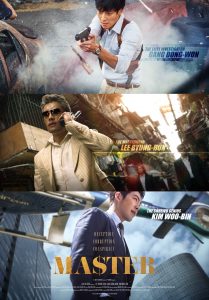
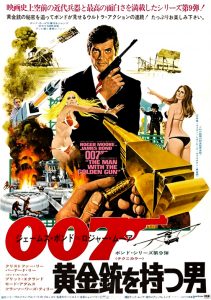
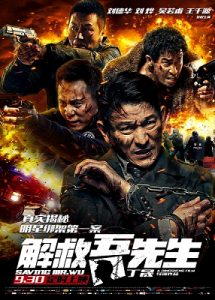
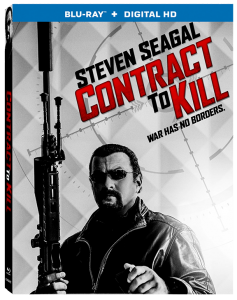
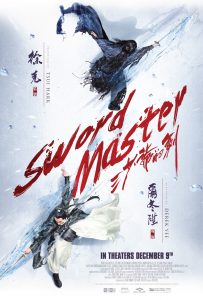
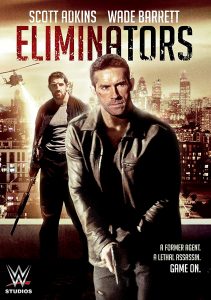




5 Comments